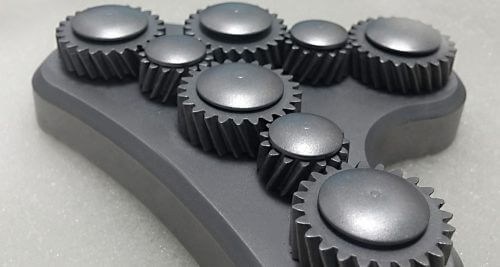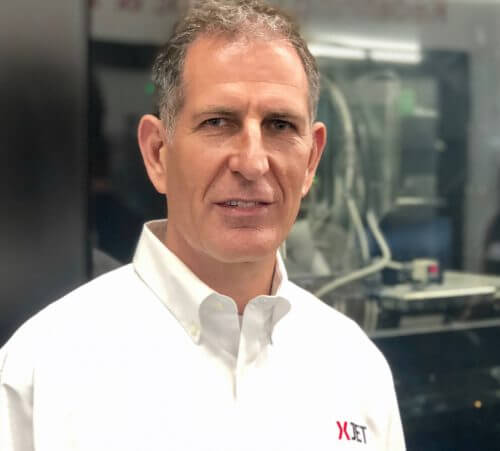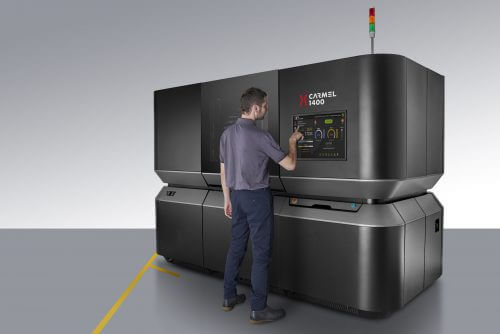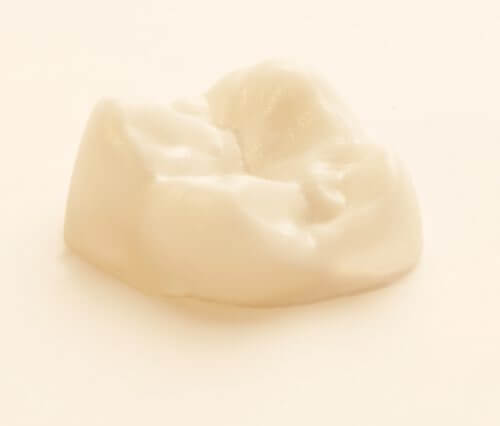This is evident from the announcement of the company XJet, which developed a method of printing with nanometer particles, also established a center for XNUMXD printing in metal and ceramics, the largest in the world, and is embarking on a fundraising campaign of tens of millions of dollars


The Israeli company XJet, which developed nano technology for XNUMXD printing in metal and ceramic materials, promises to change the production processes in many industries.
The company, which has been under the radar for a decade, inaugurated yesterday (Monday) at the Science Park in Rehovot, a center for XNUMXD printing (Additive Manufacturing) in metal and ceramics using the technology developed by NanoParticle Jetting, which uses nanoparticles in a liquid suspension, for the purpose of "printing" XNUMXD products from metal and ceramic materials In injection unlike other printing systems based on the use of powder.
In the NanoParticle Jetting technology, 222 million drops per second are injected in order to produce thin layers and build a three-dimensional part. The system controls the injection and placement of each drop, in order to produce accurate results. The system is extremely safe to use and enables precision and complexity of printing. The printing material comes in powder-free cartridges so that the printers can also be operated in closed office spaces (the liquid solutions contain solid nano-particles of metal and/or ceramics. In addition, there is a solution of a support material - a material used to build supports that are removed after the end of the printing process. They are actually the scaffolds of the part being built).
The investment in XJet's development moves, which yielded the company over 80 patents in various fields, is estimated at over 100 million dollars in the last decade.
The first printer launched by XJet in 2017 is the Carmel, with first devices already sold to a variety of companies and entities around the world. The first printer sold, the Carmel 1400, which is designed for metal and ceramic printing, and is able to print bodies in layers with a thickness of several single microns, is prepared to create extremely complex geometries with small details. The printer was sold and installed at the citim company of the Oerlikon group, a service and production company of XNUMXD printing parts, one of the largest and most well-known in the industry. The main use that will be carried out: ceramic printing - a relatively new field. Unlike other printers of ceramic materials, the XJet printer is equipped with sealed cartridges that are loaded into the printer and from which drops of liquid are 'sprayed' onto the work surface. In a rapid drying process, the liquid evaporates and only thin layers of the printed material remain. This data enables the production of parts with geometrical complexity, almost unlimited and of high quality. And what's more: in the prints currently available on the market, it is necessary to remove the unnecessary supports after printing the part. In XJet printers, the supporting structures, made of a material specially developed by the company, dissolve and disappear in a short and easy procedure, thus saving a lot of time at the end of printing.
Over 40 million shekels were invested in the center, and it is the largest of its kind in the world. The new center will help the company develop and expand the variety of types of metals and ceramic materials for use in the company's systems, in order to increase the variety of uses of the system as well as enable the development of dedicated applications in cooperation with industrial companies from Europe, the USA and Asia.
At the same time, XJet announced that it is in the midst of a significant fundraising process in the amount of tens of millions of dollars. The value of the company at the time of recruitment is in the order of hundreds of millions of dollars. The money that will be raised is intended to be used by the company in the growth of its business and its expansion into a variety of markets. These days the company has begun intensive steps to recruit manpower, establish a global distribution system, complete the transition to serial production by a leading supplier and enter a large number of international markets.
According to Hanan Gutheit, founder and CEO, XJet, the technology is a breakthrough in XNUMXD printing in metal and ceramics, and enables the precise production of very complex parts with small details. Last month, the company was awarded by the research company Frost & Sullivan, an international innovation award for the development of the technology. The ability to print with great precision and with a number of raw materials, makes XJet's systems ideal for the automotive industry, medicine and dentistry, the tool industry, aviation, and even the space and robotics industries, and in fact, in any industry that needs complex and/or unique parts: this can be due to a need for a part single or in small quantities (in which case there is no economic justification for manufacturing in a mold), and may be the result of needing a very geometrically complex part, for example, a part with internal spaces designed to improve the ratio of performance to weight.


In recent months, the company has signed deals amounting to over ten million dollars, to supply printing systems produced by it to customers, among the leaders in their field in the United States, Germany, Italy, Switzerland and other countries and even in the Israeli market. Among the company's first installations are the OERLIKON company - a very large Swiss industrial company that also owns one of the largest service bureaus in the world for the production of XNUMXD parts; The Syqe Medical company that developed a unique medical inhaler, the Russian service provider AB Universal, also signed a cooperation contract with one of the world's largest companies in the dental field.
XJet, located in the Science Park in Rehovot, was founded by Hanan Gutheit - a serial entrepreneur who was one of the founders of Objet Geometries, a manufacturer of 2012D printers. Objet merged in 1.4 with its major competitor, Stratasys, at a valuation of $XNUMX billion.
The company has over 100 employees, including a large number of senior executives and/or technological experts from the founders and leaders of the 80D printing industry. The company recently began intensive moves to recruit manpower in order to establish a global distribution system, increase the production system, and strengthen the development team and is planning a move to new offices, in order to support the increase in sales in the international markets. The investment in XJet's development moves, which yielded the company over 100 patents in various fields, is estimated at over XNUMX million dollars in the last decade.
"A recent market survey indicates that while the 25D printing market is growing at an annual rate of 80%, the field of 100D printing in metal is growing at a much higher annual rate of XNUMX%," says Gottheit. According to him, XNUMXD printing in metal has been implemented by a large number of Fortune XNUMX companies and the market is thirsty for quality solutions for XNUMXD printing in metal like the solution that XJet's systems provide "After a long time when we worked hard in the laboratories on development and feasibility tests, we are ready to go to the market. Our customers understand that our unique technology positions us as the market leader. There is huge interest in our technology from many who believe in us and our groundbreaking solutions. We are going to fundamentally change the way in which products are manufactured today in a variety of industrial fields.'

3 תגובות
Amazing on the one hand, but thought-provoking about the place of all the machining factories and workers.
In other words, there will be a crazy saving in time and spending money outside, for all the factories where the engineers design a product but take the production outside (until the parts are received and things are checked).
But what will happen to all the workers and the machining factories? Such a level of accuracy simply makes their existence redundant.
I was at the event, I tried to explain the technology as much as possible.
I did not understand. Is this an advertisement or an article about technology?